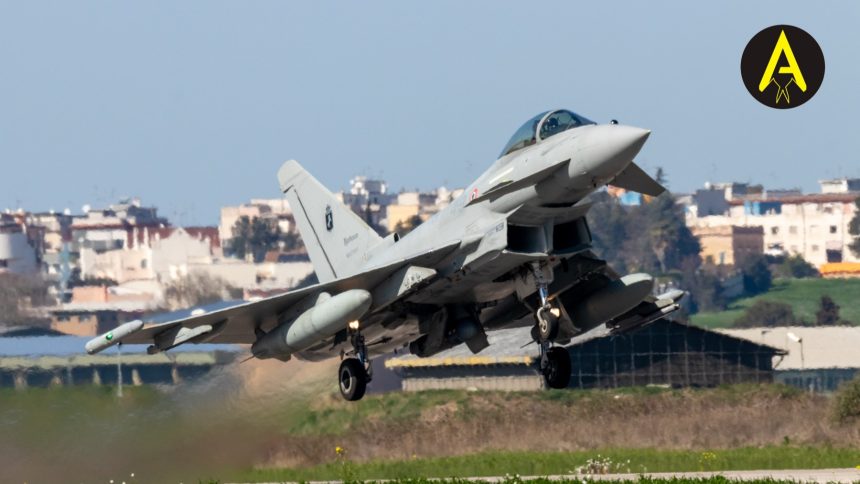Eurofighter is shifting to a mid-life upgrade strategy and plans to double Typhoon production to meet global demand amid delays in sixth-gen fighter programs.
As Europe’s sixth-generation fighter programs struggle with the risk of delays and industrial friction, the Eurofighter Typhoon, long considered a mature platform, is poised for a dramatic resurgence. In fact, plans are underway to more than double annual production and reorient modernization efforts toward a flexible mid-life upgrade (MLU), which will allow the Typhoon to remain operationally relevant into the 2060s.
Speaking at the Paris Air Show 2025, Eurofighter CEO Jorge Tamarit Degenhardt outlined a shift in both industrial tempo and technological ambition. The Typhoon, which has already secured 729 orders globally, is at the heart of a renewed push to deliver “combat mass” to Europe, as Degenhardt said in Defense News’ report, and export customers amid an increasingly volatile geopolitical environment.
Degenhardt described the current moment as a “Zeitenwende”—a turning point—echoing the language used by German government in response to the changing defense landscape and the need to revitalize the armed forces.
From Long-Term Evolution to Mid-Life Upgrade
Originally, the Eurofighter roadmap was anchored in a long-term evolution (LTE) plan a comprehensive future growth path which focused on major architecture overhauls and capability insertion, similarly to the “Blocks” of U.S.-made fighters. That development plan, however, has now been placed on hold, reported Aviation Week.
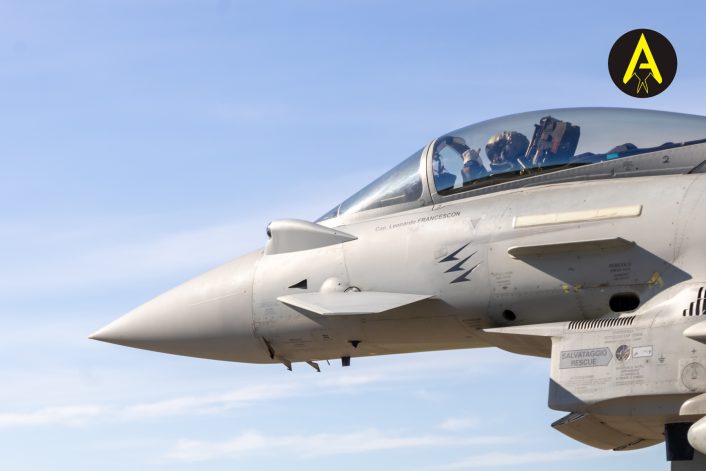
“We need to rethink what’s the operational need of the Eurofighter within the FCAS and GCAP theater and reassess what is the need of the long-term evolution,” Degenhardt told reporters, referring to the Franco-German-Spanish Future Combat Air System (FCAS) and the British-Italian-Japanese Global Combat Air Programme (GCAP).
At the heart of this shift is a new electronic architecture that would allow Typhoons to operate seamlessly alongside sixth-generation fighters and uncrewed loyal wingmen. This would likely see the Typhoon becoming a digitally connected node within the evolving European combat air ecosystem, which is increasingly populated by advanced variants of the Typhoon, Rafale and Gripen, as well as the 5th gen F-35.
Eurofighter officials acknowledge the aircraft is “reaching the limit” of its current avionics and processing hardware. A “computing capacity issue” must also be overcome to support future mission systems.
The MLU is intended for both new production aircraft and retrofits to in-service fleets. A life-extension program could be bundled into retrofit packages, extending the Typhoon’s service life while integrating key upgrades to mission computers, avionics buses, and electronic warfare systems.
“Jets delivered today will fly into the 2060s,” Degenhardt emphasized. However, despite the urgency of the requirement, the CEO noted that none of the four partner nations—Germany, Italy, Spain, and the UK—have yet committed funding for the effort.
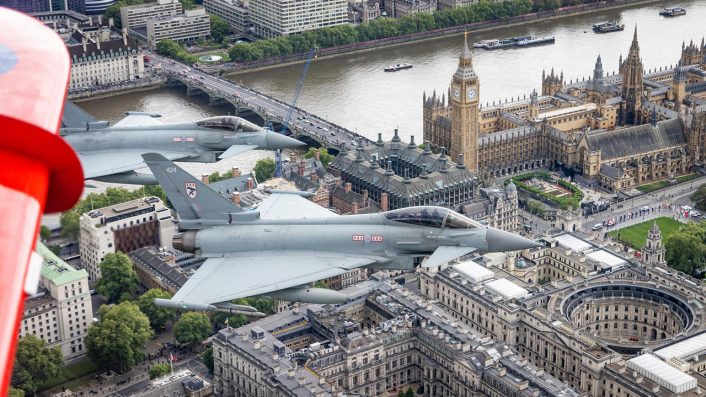
Scaling Production to Meet Strategic Demand
Parallel to the modernization initiative, Eurofighter is preparing for a sharp ramp-up in production. The current build rate stands at 14 aircraft per year, but this is expected to rise to 20 by 2028 and potentially reach 30 aircraft annually shortly thereafter, contingent on success in ongoing export campaigns, explained Degenhardt.
“We are eyeing already a [production] rate of 30 once export orders start kicking in,” said Degenhardt. “We need to do it fast.”
To support this expansion, Eurofighter plans to invest heavily in production technologies and supply chain resilience. The group, composed of Airbus, BAE Systems, and Leonardo, is working to reduce delivery lead times—currently averaging around 50 months—by digitizing workflows, upgrading tooling, and stabilizing a network of over 400 key suppliers.
“Since these deliveries are happening within the next decade or decades, we need to sustain this increase of industrial throughput, [by developing] the best new manufacturing technologies, and we need to strengthen as well our supply chain of 400 critical suppliers,” stated the CEO.
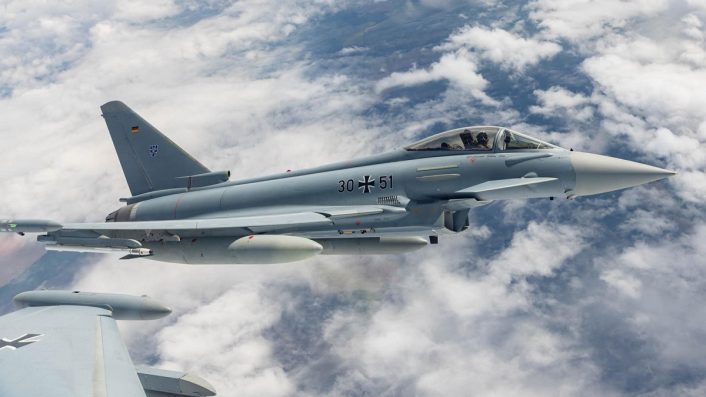
Export Momentum: Austria, Poland, Turkey, Saudi Arabia
The ramp-up is backed by a series of high-profile export campaigns. Austria is expected to make a decision soon for the replacement of its Tranche 1 Typhoons, with a government report earlier this year recommending a fleet recapitalization.
Poland is seeking up to 32 air dominance fighters, with the Typhoon competing against the Boeing F-15EX. Turkey is considering a potential 40-aircraft buy, while Saudi Arabia, already operating 72 Typhoons, is engaged in advanced negotiations for a second tranche.
Saudi Arabia remains a key strategic partner, but U.S. efforts to deepen defense ties have added pressure by promoting American platforms. Degenhardt acknowledged the challenge: “We survived the first visit,” he said, referring to U.S. President Donald Trump’s recent visit in the country, but added that the window to secure a deal “is not huge—we need to be fast.”
Additionally, Portugal has emerged as a prospective new customer, and existing users like Germany and Spain are preparing further buys. Germany is expected to order 20 more Typhoons in 2025, and Spain, fresh from its Halcón II procurement, may follow suit.
The UK, however, is charting a different course. The recent Strategic Defence Review reaffirmed London’s preference for expanding its F-35 fleet, possibly incorporating both A and B variants, and investing in GCAP. “Our leverage to influence the UK’s SDR is limited,” said Degenhardt in Breaking Defense‘s report, “and they are really moving towards F-35 operations and GCAP.”
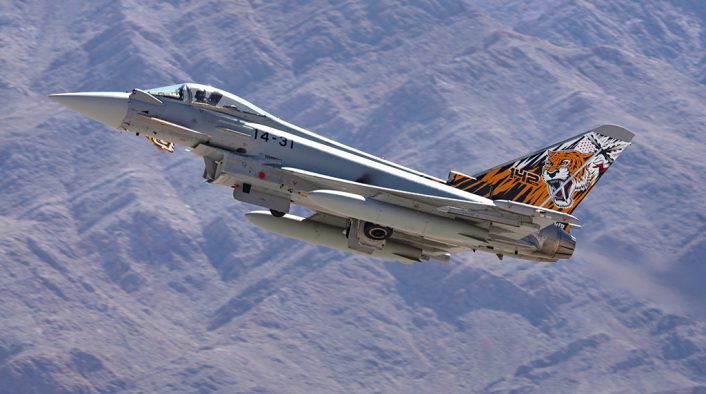
A Bridge to the Sixth Generation
Despite political enthusiasm for sixth-generation programs like FCAS and GCAP, both are facing uncertainty. FCAS, in particular, continues to be hampered by industrial workshare disputes—especially between Dassault Aviation and Airbus. At the Paris Air Show, Dassault confirmed that the Rafale F5 will serve as a stopgap until a sixth-generation platform enters service, something that is now not expected to happen until at least 2045.
The uncertainty surrounding FCAS timeline lends further weight to the Typhoon’s mid-life enhancement. Eurofighter offers a mature platform already integrated into NATO structures and with a broad industrial base capable of absorbing near-term funding.
The upgraded Typhoon might not be able to be considered as an alternative to sixth-gen programs, however it could be a critical enabler acting as a bridge platform that will ease the transition into the next era of airpower. As a matter of fact, the Typhoon and the GCAP manned fighter are expected to serve together for some years during the transition.
While the specifics of the MLU are still being defined, some expected areas of focus might include:
- New mission and flight computers with enhanced processing capacity;
- Modernized electronic warfare systems, with potentially a new upgrade to the Praetorian DASS suite or even a combination with the Saab Arexis suite;
- AI-assisted data fusion for network-centric warfare and AI assistance for the pilot;
- Modular architecture to support the rapid integration of new capabilities.
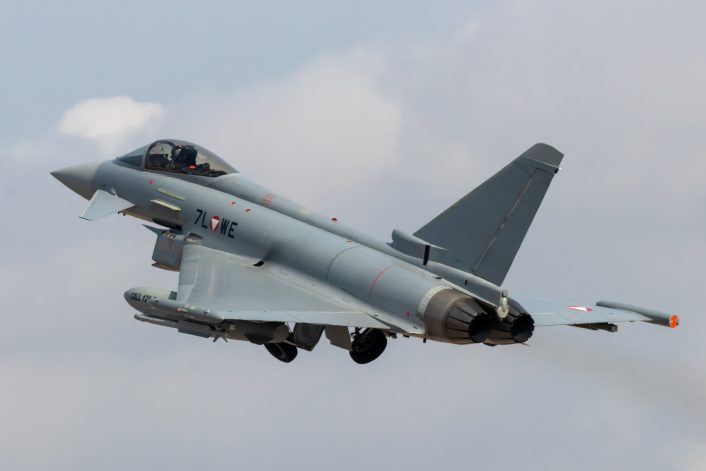
Strategic Relevance and Industrial Resilience
In many ways, Eurofighter’s renewed drive reflects a broader reassessment of how European defense programs can meet real-world demands. Also, this comes at a time when Europe is working to ease the dependence on U.S. made systems and strengthen its own defense industry.
Degenhardt framed the Typhoon’s modernization as a move to keep the jet “operationally relevant” as technology and operational scenarios are in a rapid, continuous evolution. With over 600 aircraft in service, and new customers likely to join the fleet, Eurofighter aims to offer a future-proofed backbone to European and allied air forces.
From a defense industrial standpoint, the Typhoon’s continued relevance also supports a skilled workforce, sovereign supply chains, and strategic autonomy in fighter development. “We didn’t max out yet,” said Degenhardt, hinting at further capability growth and scale.
Moreover, as highlighted multiple times in the past by industry, these efforts would allow to retain a skilled workforce and continue to accumulate know-how ahead of the start of the production of 6th gen fighters. Airbus previously said, before the recent Tranche 5 order, that production of Eurofighter in Germany would come to an end in 2030, years before the launch of the FCAS production.

